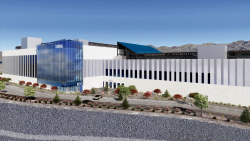The plane’s operating costs are a jaw-dropping $130,000 per hour—largely because of its unique and labor-intensive maintenance process.
The Northrop Grumman B-2 Spirit is on the verge of being replaced. But the B-2, first flown in 1989, was the world’s first—and remains the world’s only—strategic bomber to incorporate stealth features. A watershed moment in aerospace development, a generation ahead of its time, the B-2 remains an impressive machine, in spite of its anticipated imminent retirement.
At $2 Billion Per Unit, the B-2 Is the Most Expensive Plane Ever
Perhaps the most astonishing feature of the B-2 Spirit is its price tag. At $2 billion per aircraft, the B-2 is the most expensive aircraft ever built. For comparison, the ultra-luxury 747 that the Trump administration recently accepted from the Qatari royal family cost $400 million—less than a quarter the price of a single B-2.
The reason for the absurd price is simple: only 21 of the aircraft were ever produced. Accordingly, the massive investment into the development of cutting-edge, novel technologies was never diffused across multiple units, and instead remained concentrated in just 21.
So what does $2 billion dollars per aircraft get? For starters, the lowest radar cross section (RCS) in a bomber, ever. On radar, the B-2 appears to be the size of a small bird.
The designers achieved such a low RCS with a combination of novel tech—the most obvious of which is the shaping. The B-2 is a flying wing design, meaning the fuselage and the wing are blended and tailless. The streamlined design minimizes RCS and improves aerodynamic performance, resulting in an improved lift-to-drag ratio. The flying wing design is inherently unstable, requiring a fly-by-wire system to compensate for the instability.
In addition to the flying wing design, the B-2 is coated with radar-absorbent materials (RAM). Also, the bomber’s engine exhaust was designed in a way that cools and reduces the exhaust, further reducing the aircraft’s infrared signature.
The B-2’s Stealth Technology Is Out of This World
Unlike the F-117, which was the world’s first stealth aircraft—and is only stealthy from the front—the B-2 is stealthy from all angles, allowing for deeper penetration into defended airspace.
And that’s the primary benefit of the B-2. The aircraft, at least when it debuted, had the capacity to operate behind enemy lines, without detection. When paired with the ability to deliver up to 40,000 pounds of conventional or nuclear ordnance, the B-2 becomes a strategic paradigm-shifter. The possessor of something like the B-2 immediately benefits from enhanced, potentially unmatched, nuclear deterrence.
Yet the B-2’s reign is quickly concluding. Why? For one thing, its operating costs are monumental, at $130,000 per hour. The costs are so high because the aircraft’s maintenance demands—particularly for its sensitive stealth coating materials, which must be regularly re-applied—are so high. Yet with just 19 B-2’s still in operation, the fleet is not well positioned for long-term logistics or upgrades.
Ultimately, the B-2’s stealth performance has fallen behind the curve. The forthcoming B-21 Raider will offer improved stealth, lower costs, easier maintenance, and greater survivability against modern, sophisticated air defense systems.
The B-2’s days are numbered, but the aircraft will nonetheless always be the world’s first stealth strategic bomber.
About the Author: Harrison Kass
Harrison Kass is a senior defense and national security writer with over 1,000 total pieces on issues involving global affairs. An attorney, pilot, guitarist, and minor pro hockey player, Harrison joined the US Air Force as a Pilot Trainee but was medically discharged. Harrison holds a BA from Lake Forest College, a JD from the University of Oregon, and an MA from New York University. Harrison listens to Dokken.
Image: Wikimedia Commons.

















